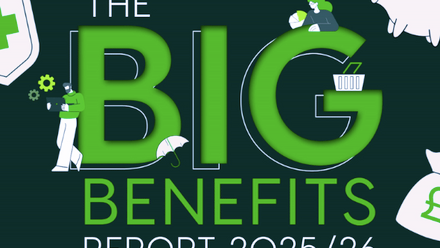How to engage employees with their pensions to ensure employers get value from their investment

This is identified in Aegon/CBI’s Engaging with Savings Report 2018:
- only 12% of businesses are happy with levels of employee engagement in their pension plans
- 66% of firms believe employees need to be educated about the benefits of workplace savings
- 89% felt they have a pension engagement responsibility
- 76% of businesses believe employees have a responsibility.
The same research concluded that UK employers do see pensions as having a positive impact on recruitment and workforce retention, but employee engagement is just not happening – frustrating many employers.
Engagement?
Employees’ recognise that they really should be thinking about their long-term plans, but many prefer not to think about it. They very quickly move on to the next matter in hand.
Successful pension and benefit communication strategies often start by bringing together the senior management team (an important ‘peer’ group) into a workshop environment and expressing their thoughts to help formulate a plan.
Start with what impacts staff on a day to day basis. This might be best broken down into the positioning of existing benefits so that they appeal to all demographics, but also don’t forget ‘day to day’ saving tactics:
- the next 12 months – access to cash, rent payment, debt management, monthly budgets
- +3-5 years – save for a holiday, kids school stuff, ISA savings, wedding, house deposit and/or improvements
- Long-term (+10yrs) – savings, mortgage repayment, inheritance, and retirement
Nudges
Use these to get employees thinking. An example of a nudge might be: “We’ve been informed that you selected your retirement age as 65, and I wanted to check if this remains your preferred retirement age?”
Why? Known as a behavioural nudge, most employees are auto-enrolled into a workplace pension with a default retirement age of 65. Asking this question immediately starts the employee thinking – do I want to retire at 65? How much can I have at 65? How much have I got now? etc.
Also don’t throw the kitchen sink at your employees with supposedly educational material, and hope they engage. They will accept it gratefully and then probably ignore it.
I’m told my 17 year son is likely to have an attention span of eight seconds because that’s how he interacts with social media/adverts. But place a PlayStation in front of him, and he is engaged happily for two hours or more. That’s because it’s fun and the game is set out in achievable levels i.e. chunk size achievement levels that entice him to the next level on successful completion.
Workplace engagement communication should be the same – small chunks please!
So consider setting out a timetable but use ‘chunking’ i.e. bite size educational pieces.
Get a plan in place
Help ‘nudge’ employees towards your final goal/objectives with a structured plan. Not only will this be more enjoyable, but it will start to embed in the employee’s mind the value you offer them as an employer.
A good advisor can help you explore this using a mix of tools that are positioned precisely, and in a timely fashion, to maximise impact, such as at the end of the financial year, tax year, salary change or bonus payments, and of course, legislative change, such as contribution increases due to auto-enrolment.
Use engaging communications to nudge staff towards total reward statements, group presentations, online tools, benefit platforms, paper-based and self-diagnosis technology.
You may need to consider a budget or whether you need to reshape existing commitments. Planned in advance, this can often be done cost efficiently. It will, though, drive much higher levels of employee engagement, appreciation of the remuneration package and create a more educated workforce.
Finally, involve your senior management team – ‘peer group’. Behavioural research shows that peers have a powerful effect on our decisions. It’s why we tend to believe people in authoritative positions such as managers, CEOs and doctors. It’s also why celebrities are often used in advertising to promote goods and services.
No, I don’t have a celebrity to present at your next workplace pension seminar. But I might just have a decent plan to make you, the employer, feel more loved!
The author is Chris Elsey, senior consultant at Premier.
This article is provided by Premier.
Supplied by REBA Associate Member, Premier Benefit Solutions
Premier is an employee benefit, pensions & wealth management group of companies.







